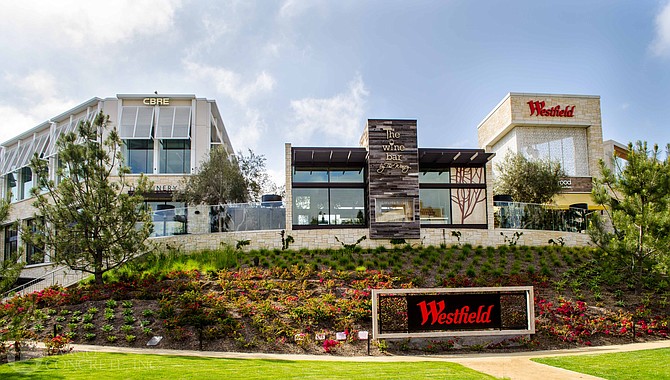 Facebook
Facebook
 X
X
 Instagram
Instagram
 TikTok
TikTok
 Youtube
Youtube

Instead of widening I-5, widen the options for transit. That was the idea behind a lawsuit in 2013 that claimed the proposed freeway expansion between La Jolla and Oceanside would lead to “an enormous surge in greenhouse gas emissions.”
There were better ways to tackle congestion, argued the Cleveland National Forest Foundation's suit against the federal Department of Transportation. The case settled, and last week the fulfillment of its main terms was announced: a feasibility study for a double-track rail tunnel through Miramar Hill (the land under UTC's existing transit stop) in University City.
The two sides had struggled for years before coming together on the analysis, but have finally "worked this out for the common good," says the forest foundation's co-founder, Duncan McFetridge.
Key to the settlement were rail corridor improvements on the busy Los Angeles-San Diego-San Luis Obispo rail corridor. The tunnel, which would cost roughly half a billion dollars, would be useable by both Coaster and Amtrak trains.
While the lawsuit had found the widening project inconsistent with the state's emissions reduction goals, the study shows the tunnel – an existing plan that got sidelined – could reduce annual greenhouse gas emissions by 70,000 to 84,000 metric tons.
Will time and money lure drivers out from behind the wheel?
It turns out that the proposed rail tunnel under Westfield UTC could lop six to seven minutes off peak travel time between San Diego and Los Angeles. A prior federal study found the tunnel, with other corridor improvements, would reduce travel time between San Diego and Los Angeles to two hours.
Bigger savings would come from lower travel costs. The study concluded that taking transit would cost $180 per month, while driving a car would cost $507.
The estimate of additional passengers the tunnel could draw is from 1,300 to 1,700 per day.
A new transit station would be built at the mall, which would include connections to light rail, local bus, and bus-rapid transit, making it easier to get downtown, the airport, and destinations served by the Sprinter light rail system which connects with the corridor at Oceanside.
In recent comments submitted for the draft 2021 regional transportation plan update, the forest foundation, along with Save Our Forest and Ranchlands, urged the San Diego Association of Governments to begin with a climate, housing, transit alternative focused on all the ways to get around that don't increase pollution.
For transit to work, they wrote, it has to include biking and walkable spaces to make sure everyone can get there. The Miramar transit station would have both bike and pedestrian access.
"Because no trip begins or ends on a transit vehicle."


Instead of widening I-5, widen the options for transit. That was the idea behind a lawsuit in 2013 that claimed the proposed freeway expansion between La Jolla and Oceanside would lead to “an enormous surge in greenhouse gas emissions.”
There were better ways to tackle congestion, argued the Cleveland National Forest Foundation's suit against the federal Department of Transportation. The case settled, and last week the fulfillment of its main terms was announced: a feasibility study for a double-track rail tunnel through Miramar Hill (the land under UTC's existing transit stop) in University City.
The two sides had struggled for years before coming together on the analysis, but have finally "worked this out for the common good," says the forest foundation's co-founder, Duncan McFetridge.
Key to the settlement were rail corridor improvements on the busy Los Angeles-San Diego-San Luis Obispo rail corridor. The tunnel, which would cost roughly half a billion dollars, would be useable by both Coaster and Amtrak trains.
While the lawsuit had found the widening project inconsistent with the state's emissions reduction goals, the study shows the tunnel – an existing plan that got sidelined – could reduce annual greenhouse gas emissions by 70,000 to 84,000 metric tons.
Will time and money lure drivers out from behind the wheel?
It turns out that the proposed rail tunnel under Westfield UTC could lop six to seven minutes off peak travel time between San Diego and Los Angeles. A prior federal study found the tunnel, with other corridor improvements, would reduce travel time between San Diego and Los Angeles to two hours.
Bigger savings would come from lower travel costs. The study concluded that taking transit would cost $180 per month, while driving a car would cost $507.
The estimate of additional passengers the tunnel could draw is from 1,300 to 1,700 per day.
A new transit station would be built at the mall, which would include connections to light rail, local bus, and bus-rapid transit, making it easier to get downtown, the airport, and destinations served by the Sprinter light rail system which connects with the corridor at Oceanside.
In recent comments submitted for the draft 2021 regional transportation plan update, the forest foundation, along with Save Our Forest and Ranchlands, urged the San Diego Association of Governments to begin with a climate, housing, transit alternative focused on all the ways to get around that don't increase pollution.
For transit to work, they wrote, it has to include biking and walkable spaces to make sure everyone can get there. The Miramar transit station would have both bike and pedestrian access.
"Because no trip begins or ends on a transit vehicle."
Comments